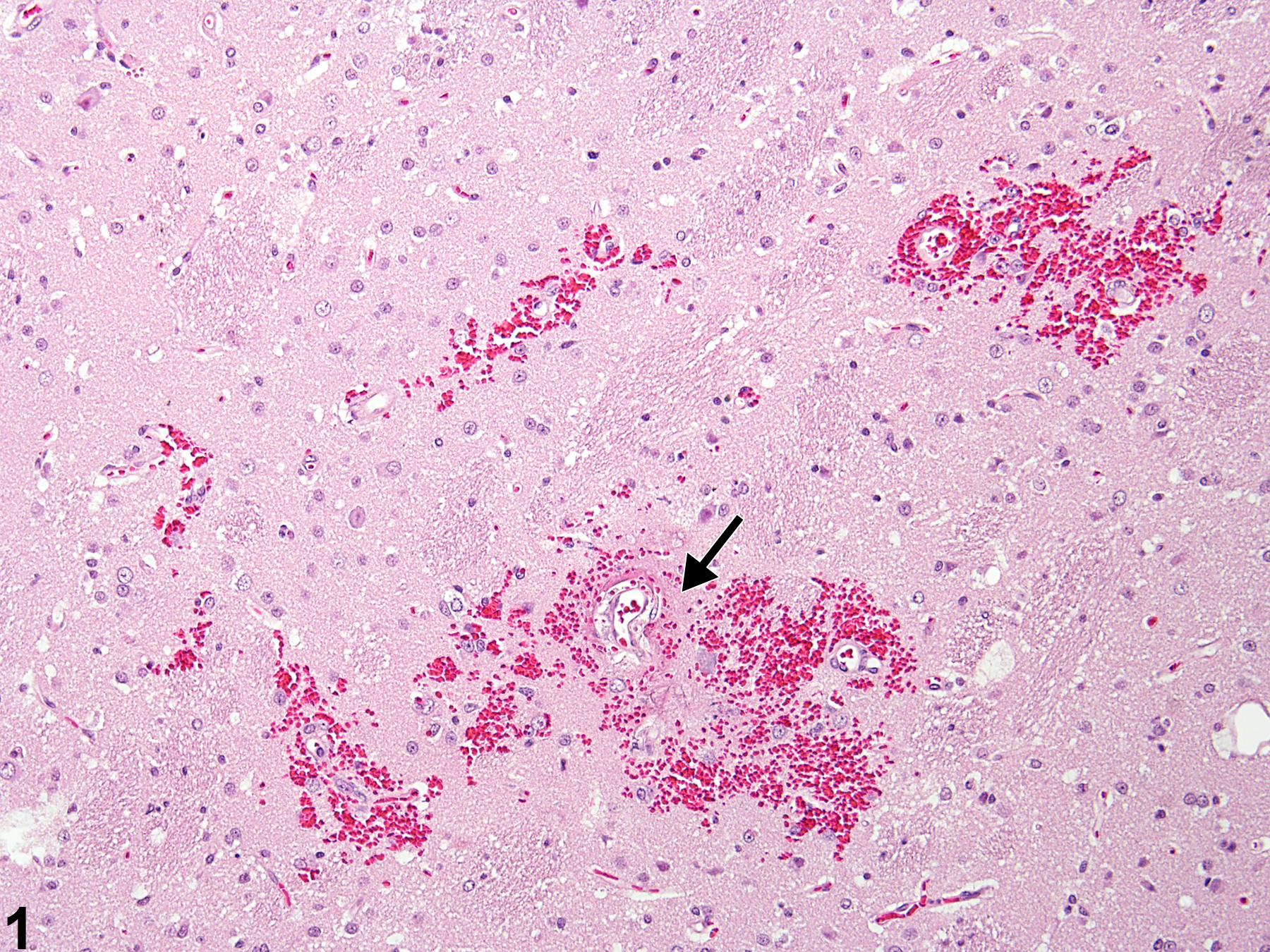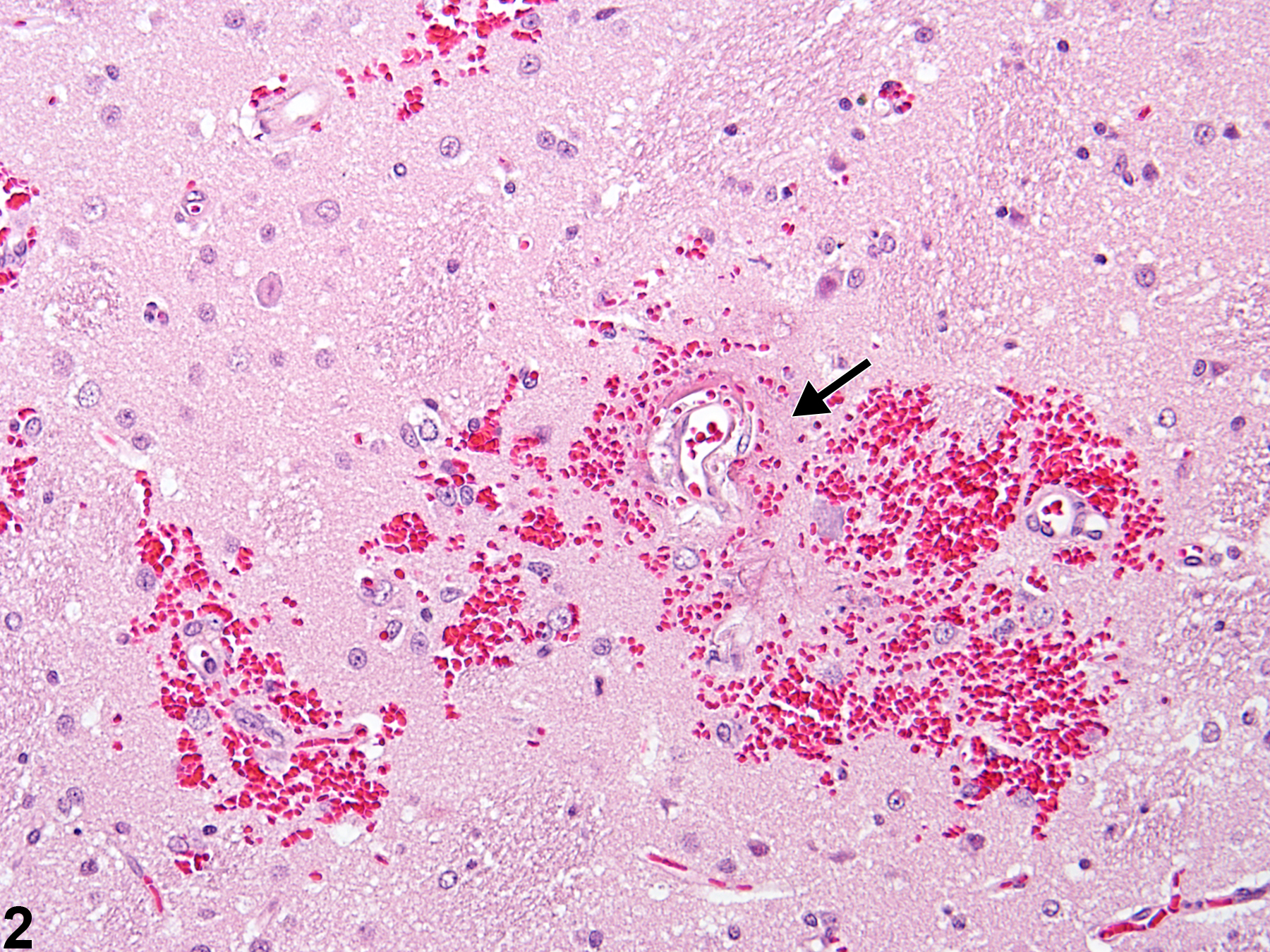Nervous System
Brain - Hemorrhage
Narrative
Cavanagh JB, Holton JL, Nolan CC, Ray DE, Naik JT, Mantle PG. 1998. The effects of the tremorgenic mycotoxin penitrem A on the rat cerebellum. Vet Pathol 35:53-63.
Abstract: http://www.ncbi.nlm.nih.gov/pubmed/9545135
Brain hemorrhage in a male F344/N rat from a chronic study. Note the accumulation of extravasated red blood cells around capillaries and the transudation of protein-rich fluid (arrow).



